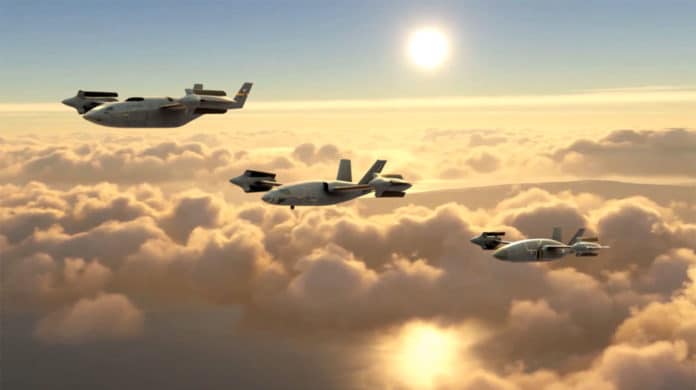The American company Bell Textron unveiled the design concepts for the next generation of military rotorcraft using the company’s High-Speed Vertical Take-Off and Landing (HSVTOL) technology. The company’s initial HSVTOL concepts aim to combine the hover capability of a helicopter with the speed, range, and survivability features of a fighter aircraft.
In May 2021, the U.S. Air Force Research Laboratory (AFRL) has contracted Bell to conduct research into developing aircraft with HSVTOL capabilities for better speed, range, and survivability features. No details were revealed at the time. But the company has now shed some light on the project.
Based on a released image and a patent applied for by Bell, the new aircraft concepts look similar to a Bell-Boeing V-22 Osprey tiltrotor, an invaluable platform that changed the way the U.S. military conducts amphibious assault, long-range infiltration, and exfiltration and resupply with a cruise speed and range twice that of helicopters it replaced.
The new aircraft concept switches to jet power in horizontal flight as the rotor blades fold back out of the way into the nacelles. According to the manufacturers, such a system would be capable of low-downwash hover and jet-like cruise speeds over 400 kt (460 mph, 740 km/h). Bell says its High-Speed Vertical Take-Off and Landing aircraft could be used for a “range of missions from unmanned personnel recovery to tactical mobility.”
The aircraft could also come in a variety of sizes, from a gross weight of from 4,000 to over 100,000 lb (1,800 to 45,000 kg) – roughly twice the weight of the U.S. Air Force’s Bell-Boeing CV-22 Osprey tiltrotor. The VTOL aircraft represented in Bell’s rendering also suggests that the concepts include stealth capabilities and would offer both manned and unmanned configurations.
Bell’s HSVTOL capability is critical to future mission needs offering a range of aircraft systems with enhanced runway independence, aircraft survivability, mission flexibility, and enhanced performance over legacy platforms. With the convergence of tiltrotor aircraft capabilities, digital flight control advancements, and emerging propulsion technologies, Bell is primed to evolve HSVTOL technology for modern military missions to serve the next generation of warfighters.
“Bell’s HSVTOL technology is a step-change improvement in rotorcraft capabilities,” said Jason Hurst, vice president, Innovation. “Our technology investments have reduced risk and prepared us for rapid development of HSVTOL in a digital engineering environment, leveraging experience from a robust past of technology exploration and close partnerships with the Department of Defense and Research Laboratories.“
